In late 2018 Australia’s first-ever electric motorcycle marque pulled the cover off its inaugural prototype; the C-40. While the café racer prototype made headlines, the Aussie startup and its 27-year-old founder, Dennis Savic, have big plans for silent two-wheelers from Down Under. We caught up with the ambitious Melbourne-based millennial, engineer, and MBA holder to discuss how all this came to be and what Savic Motorcycles has in store for the future.
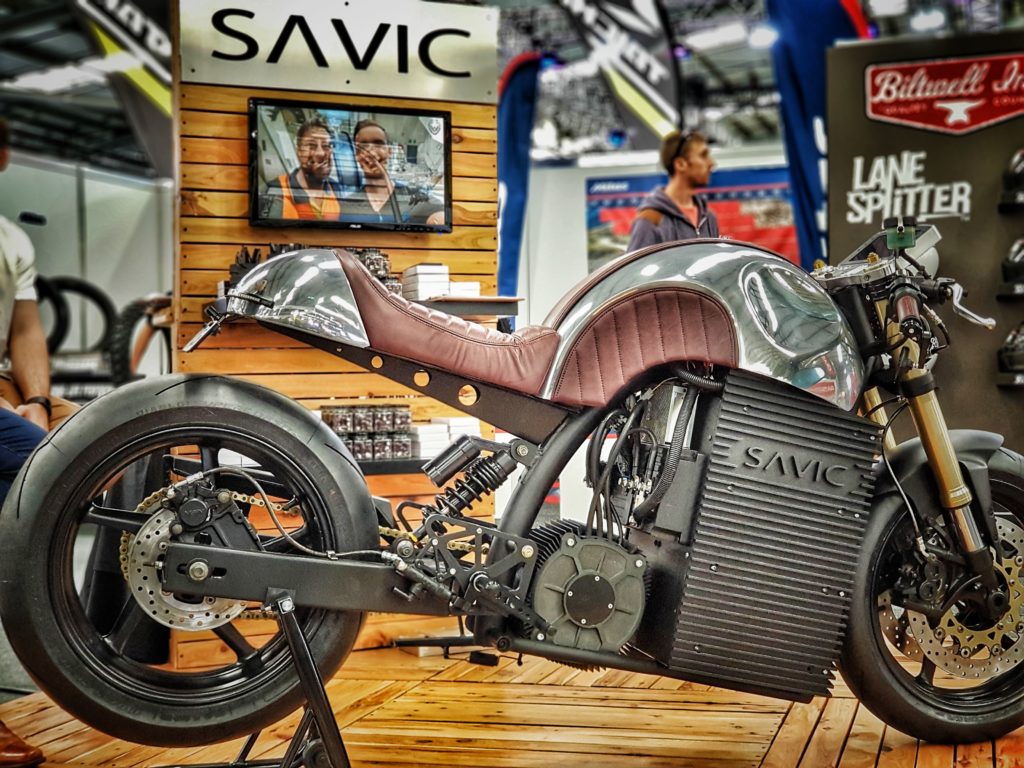
How did this all start?
“Well, this is what I’ve wanted to do since I was a kid. So when I was 14 I decided I’d study engineering at university which is where I was introduced to the world of entrepreneurism. From there I identified a gap in the market and that was electric motorcycles.”
In the years leading up to the project Dennis Savic became increasingly familiar with the ways motorcycles were designed and manufactured — deconstructing existing models on the market and essentially reverse engineering them in his spare time. His first big project was completed at uni, though looking back Savic says it was, in his words; “mega rough”.
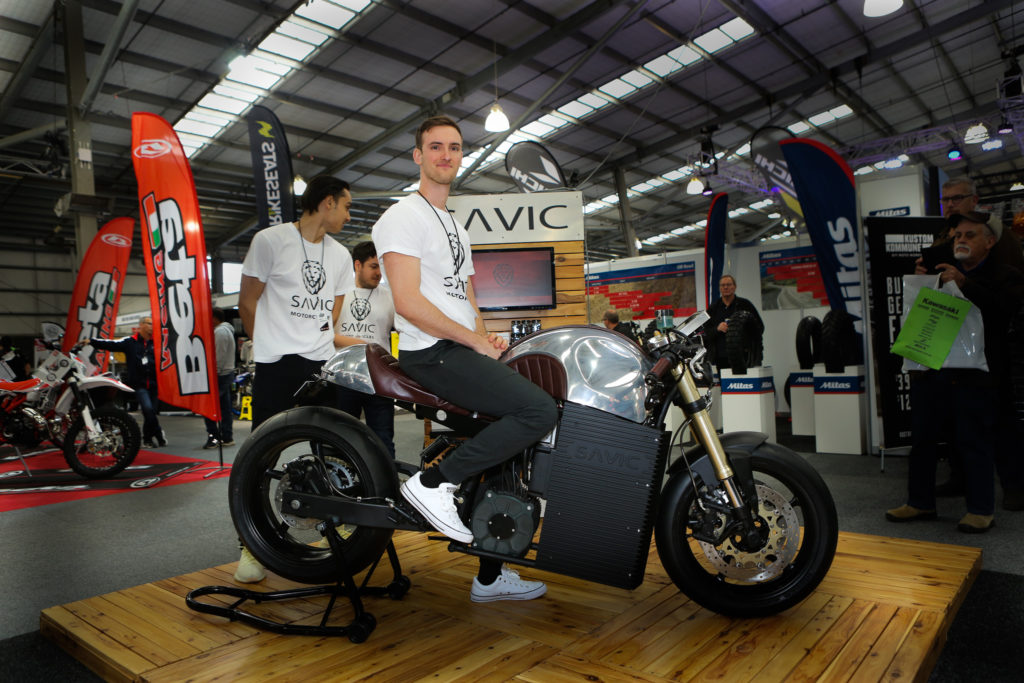
When asked what drew him to the EV sector, Savic, without missing a beat, explained, “They (e-Bikes) are just so smooth and easy to manage. They have a unique type of power and it just makes you feel like you’re in Tron when you’re riding one.”
The world first became introduced to the new Australian start-up back in mid-late November at the 2018 Melbourne Motorcycle Expo
Ultimately what separates Savic at this point in time from the rest of the electric scoots on the market is largely its appearance. While Savic will offer a few unique features here and there (none of which Dennis could legally comment on at the time) the company didn’t set out to reinvent the wheel, and rather to introduce a fun and stylish machine that excels in city environments, instead of trying to take on the gas-powered bikes. While 80hp and a 150-mile range is nothing to scoff out, it’s also nothing to write home about.
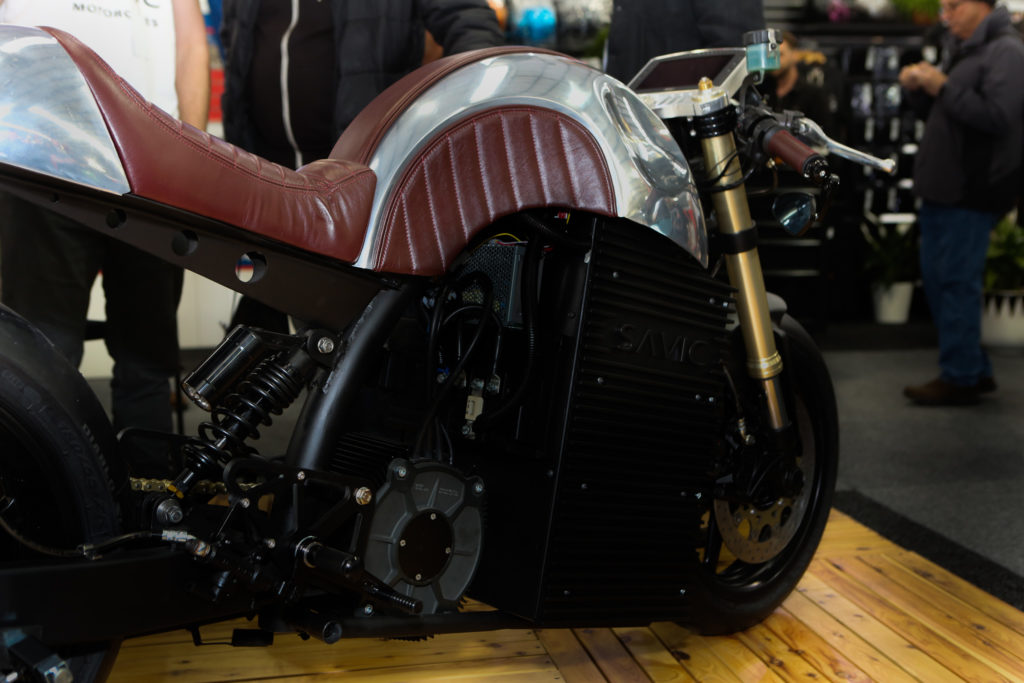
“It’s electric, so the reality is; you’re not gonna get on a racetrack and go head-to-head with a Panigale lap for lap.,” explains Savic. “We obviously have a bit of a range limitation so naturally our products are gonna be centered around being really fun urban runaround bikes ideal for daily use, and for a bike like that there are a lot of options so it’s really important to make something that’s unique and stands out.”
When I inquired as to why Dennis opted to go with a cafe racer design for the new firm’s inaugural offering, he replied, stating, “I’m obviously personally a big fan of the cafe racer style, I really like that kind of harmonization between classic design and advanced technology, and an electric motorcycle platform is a great medium for combining the two.”
After showing off the prototype, the company plans on releasing a batch of just ten “C-FE” (or “Founder’s Edition) models in 2019. These will essentially be micro-batch early production models, a la MV Agusta’s Serie Oro range, with the C-FE reportedly being virtually identical to the later larger production model (the C-Alpha) albeit with fewer custom paint, trim, and finish options — which the C-FE will have an insane amount of thanks to its low volume production.
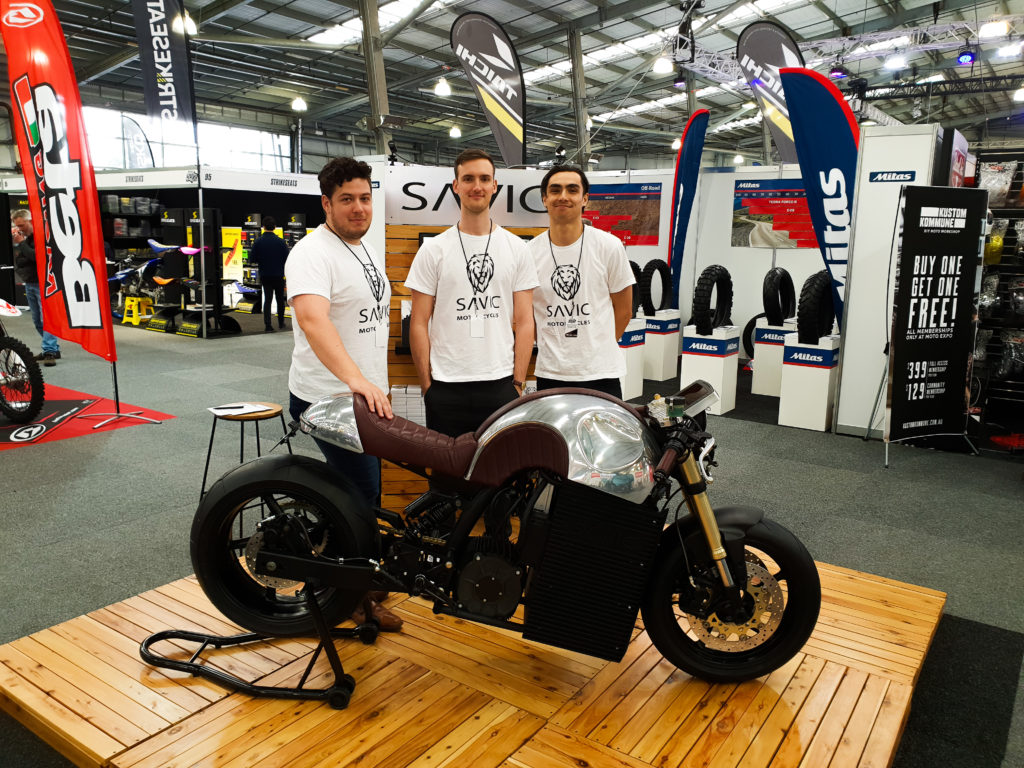
In 2020 the outfit aims to transition into larger-scale production (around 50-100 units) with a total of three models; the 25kW C-Omega; 40kW C-Delta; and the 60kW C-Alpha — though each of the trio will have several battery pack options which affect not only range, but also the bike’s power capability. Savic also hopes to invest in tooling around this same time to help keep the cost of manufacturing as low as possible, as keeping the Aussie ebikes’ price point accessible is of great importance to the Savic company. Another way Savic is keeping costs down is by not spending any money whatsoever on marketing or advertising. The company wasn’t even on social media when it launched.
Despite its small size and low volume production, Savic — currently comprised of about 7-8 people working nights and weekends, plus four dedicated advisors and another handful of specialist consultants — according to Dennis, is able to effectively sell his bikes at a relatively affordable price largely thanks to the company’s distribution model which, not unlike Tesla, sells directly to consumers without going through any distributors or retailers. I.e. there aren’t a series of middle-men taking their cut along the way.
Dennis says the three models will have a rough gas-powered-engine equivalent, however he made it abundantly clear that the two aren’t directly comparable.
“They have a completely different torque curve and totally different acceleration,” relayed Savic. “But to roughly compare them, the Alpha would be similar to a displacement between 600-1000cc’s, the Delta would be closer to a 500-600cc, and the Omega would be like a 300cc. But here’s the thing; a 300 Ninja has a peak power of 25-30, maybe 32kW, as where our bike has the same power rating but it also has instantaneous torque so the two are pretty different beasts.”
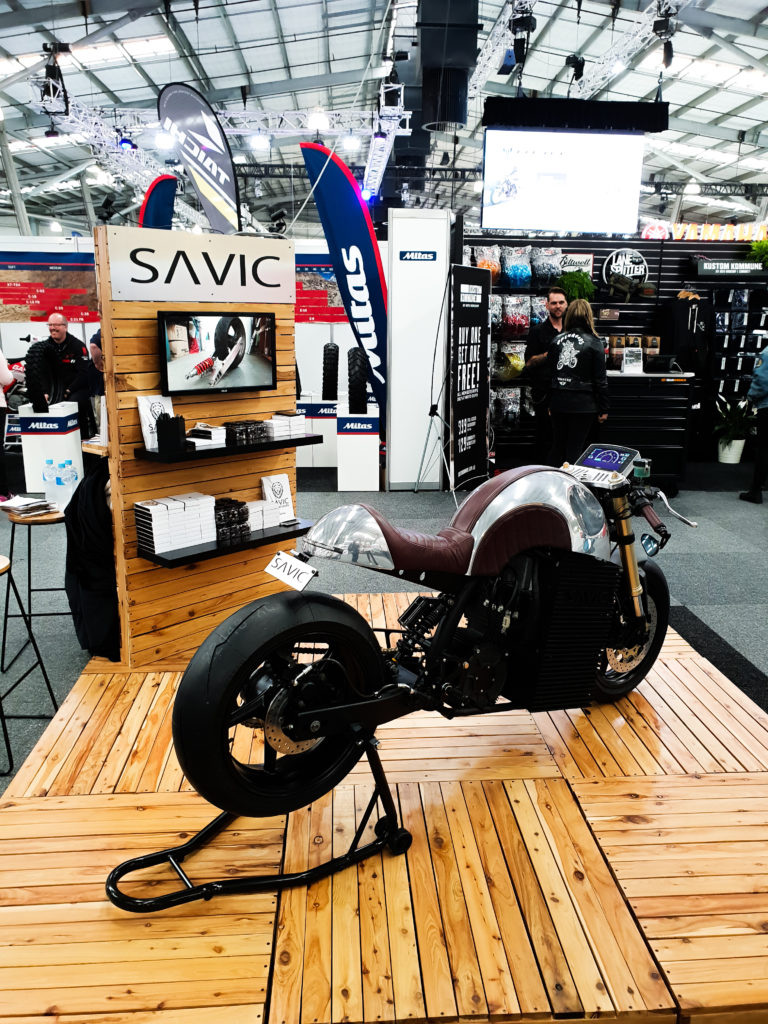
When asked how the prototype will differ from the production models, Dennis explained that the C-40 was constructed using off-the-shelf components such as a generic motor and controller, built in and around a bespoke chassis and battery box. The production vehicles on the other hand will sport a powertrain — which will reportedly be stressed and liquid-cooled — that Savic has designed with a supplier specially for the start-up’s two-wheelers, along with a custom, sealed, powertrain enclosure, plus the production Savic will pull from an array of pouch-style battery cells and not the cylindrical units on the concept. Dennis also says he plans on using a single-sided swing-arm unit on the production bikes, which will supposedly start at $20,000AUS (or about $14,300 US). The 27hp entry-level Omega will reportedly MSRP for $12,000AUS (about $8,700US)
Dennis says the feedback he’s received has been staggeringly positive, noting that a lot of Australians really like that the Savic is Aussie-designed and made, which is good because Savic only plans on initially releasing to its native market in Australia, though Dennis did tell me he plans on starting to penetrate other regions like the US in Europe in the coming years.
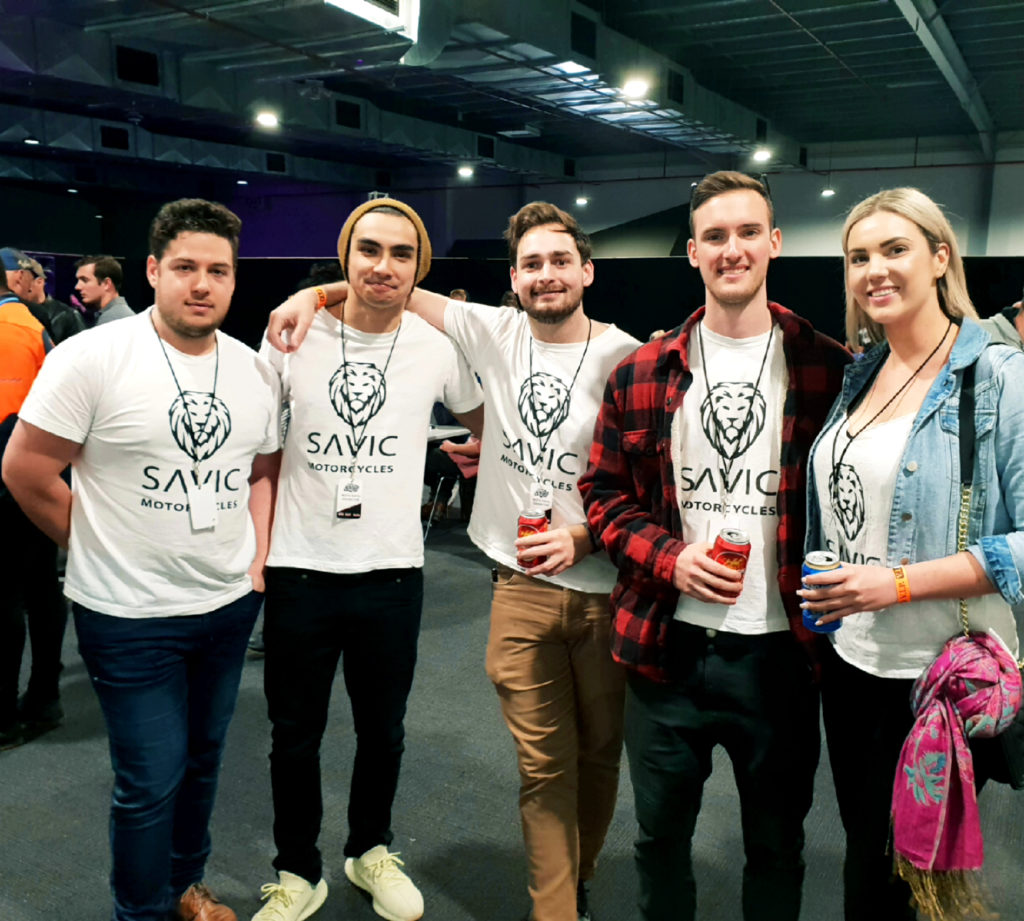
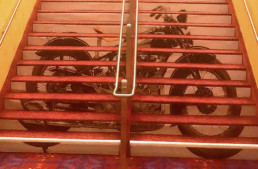
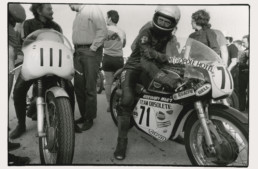
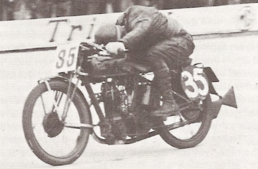
Back around ’72, I found an electric motorcycle that was advertised in the used bikes column of a Vancouver B.C. newspaper. So, I called the seller up for more information? He told me that he had just graduated from an Electrical Engineering course at UBC- that he had designed and built the bike himself, and ridden it to school for two years. He had used a Norton motorcycle- sans engine. His motor, was a 24 volt starter motor, out of a transport truck. Using a bank of ordinary 12 volt car batteries.
To this day, I regret not going to have a closer look at it! (Using a bank of solar cells, ( which did not exist back then)- I could have kissed gas stations goodbye!
The technology has come a long way since then. My next bike will be Electric!